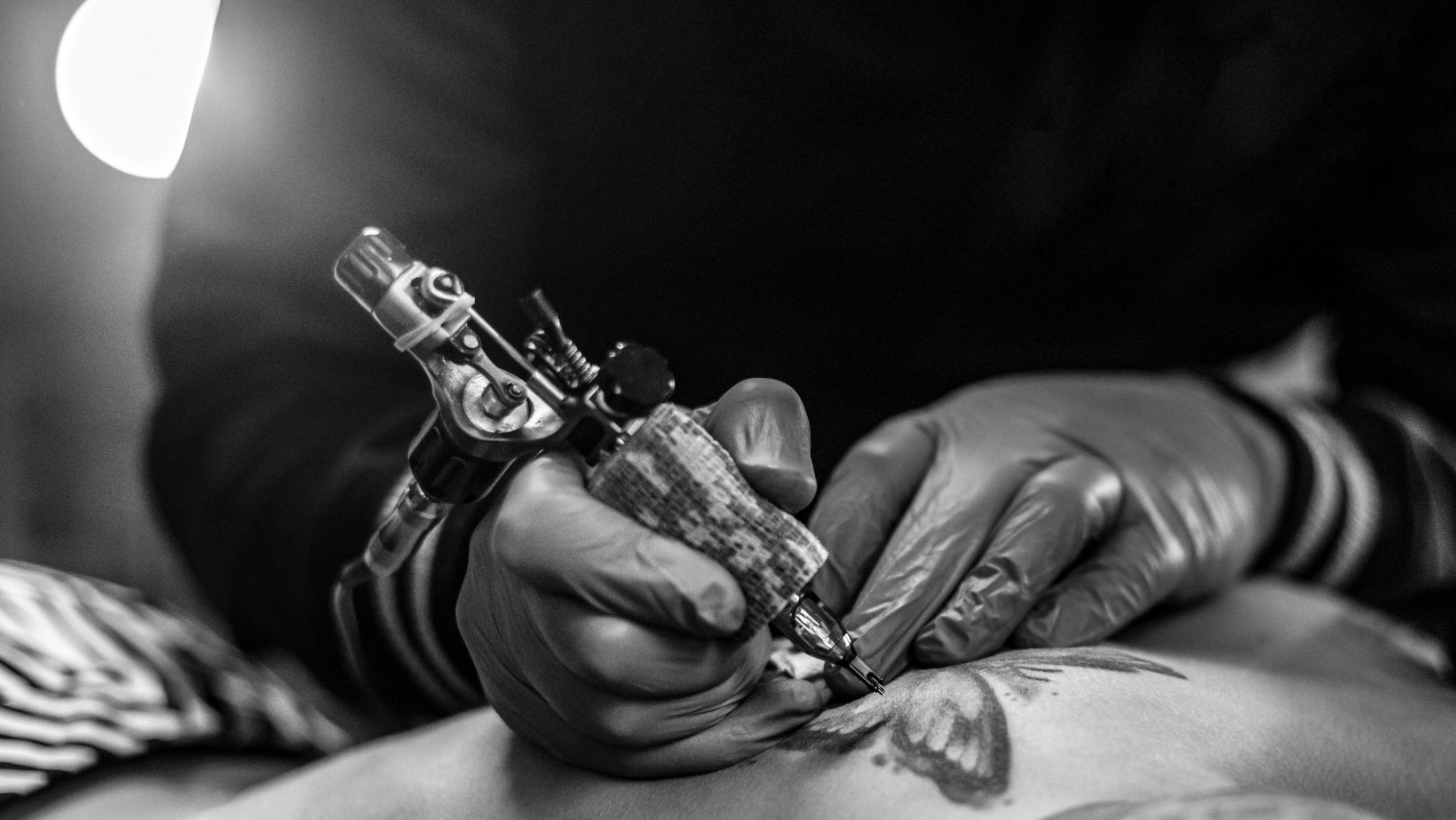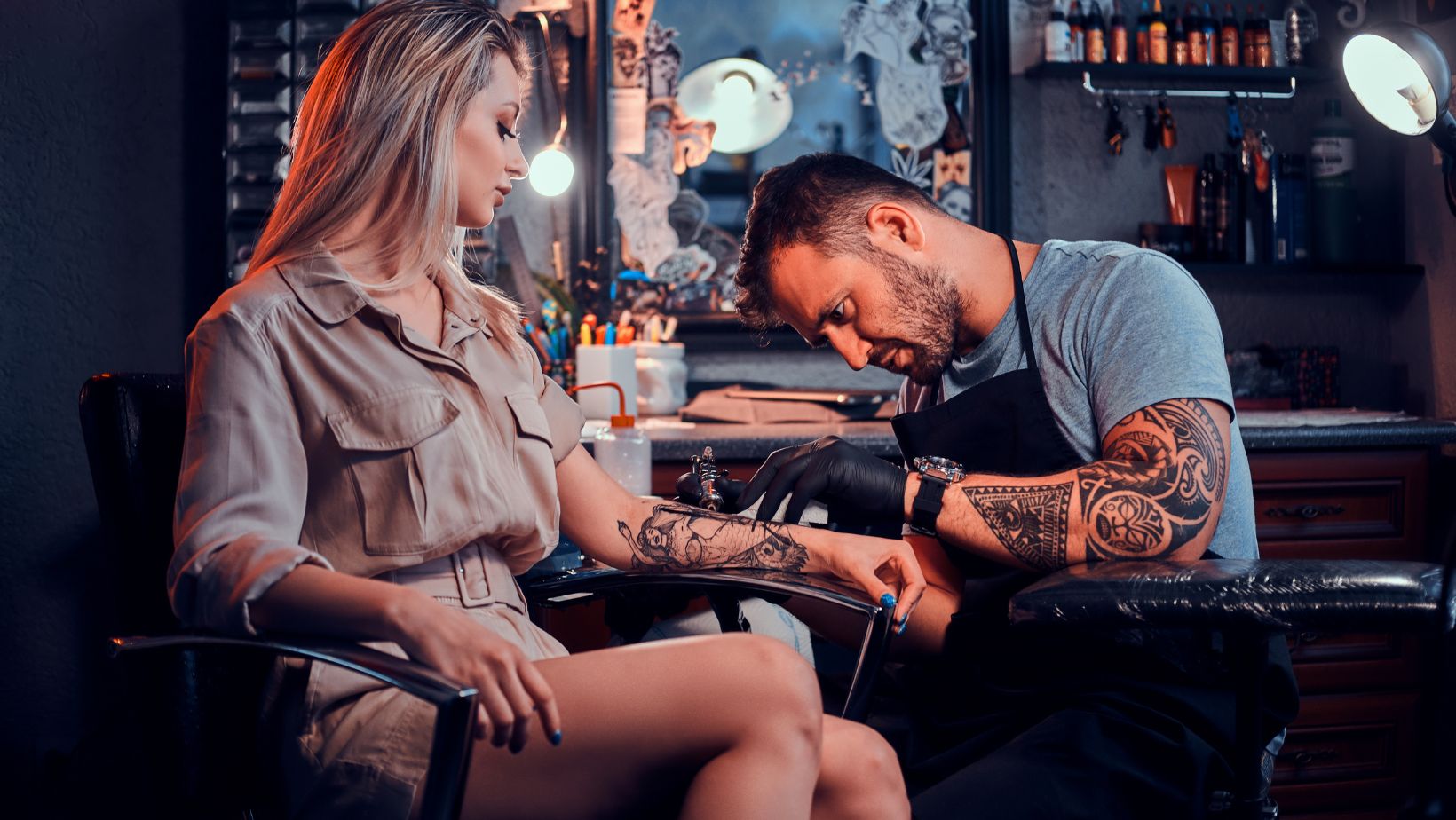
It’s fair to say that the financial world of tattooing has come a long way, tattoo shops were once underground hideaways, their marketing efforts consisting of little more than a well-placed window displays and word of mouth. Fast-forward to today, and the industry is a full-blown commercial entity with digital marketing strategies, influencer collaborations, and full-service studios offering everything from piercings to laser removal. So, where’s the money going, and more importantly, how do tattoo shops ensure they aren’t running on empty during quiet seasons? We sat down with OSCO London founder Nicholas Dimpsey to get the inside scoop.
Marketing Strategies: Then, Now, and the Future
Historically, a tattoo shop’s advertising was simple—if you knew, you knew. Back in the day, tattooing was an exclusive club, and customers were either bikers, sailors or rebels who’d heard about ‘Big Dave’s’ legendary skull tattoos from their mate’s mate. Business cards? Please.
Today, marketing a tattoo shop is more of a science (and a costly one at that). Social media presence is non-negotiable, with Instagram and TikTok becoming the virtual shop window. Google Ads, SEO, website development and sponsored posts all play a role in getting new clients through the door. “If you’re not ranking on Google, you may as well be invisible,” says Nicholas Dimpsey. “People don’t just walk past a shop and stroll in like they used to. They research, compare portfolios, check reviews and then make a decision.”
The future? AI-driven advertising, virtual tattoo try-ons and interactive social experiences are on the horizon. And while it all sounds exciting, it’s going to cost. “The future of tattoo marketing is going to be about engagement—shops won’t just be selling tattoos, they’ll be selling experiences. It’s going to cost more, but the payoff will be higher client retention and loyalty,” predicts Dimpsey.
What About Finances?
Once upon a time, the biggest marketing expense was the shop sign and window display. Cheap and cheerful. Today? Well, let’s just say that ‘affordable’ isn’t the word. Professional websites, paid social media ads, and influencer collaborations can cost thousands per month. Even maintaining an engaging social media presence requires time, effort, and, often, hiring someone who actually knows what they’re doing.
“We spend a solid chunk of our budget on marketing every month,” Dimpsey admits. “It’s not just about being seen; it’s about being seen by the right people. We’re targeting customers who appreciate artistry, are willing to invest in quality and want the whole experience.”
In the future, marketing costs will only rise. As platforms evolve and competition increases, paid reach will become even more necessary. “There’s no ‘cheap’ way to market anymore, and that’s only going to get more intense,” says Dimpsey. “Studios need to budget properly or risk falling into the trap of relying on quick, low-quality work just to stay afloat.”
The Dangers of Price Dropping
Speaking of quick work, one of the biggest financial pitfalls in the industry is the temptation to drop prices during slow periods. It makes sense, right? Fewer clients mean lower prices to attract business. Wrong.
“Discounting might help short-term, but long-term, it’s a killer,” warns Dimpsey. “Once you lower your prices, it’s hard to bring them back up without losing customers. People get used to paying less, and suddenly, your premium service is expected at budget rates.”
A smarter strategy? Special offers that don’t devalue the work, such as package deals or exclusive limited-time flash designs. “There’s a way to create urgency without devaluing yourself, we have operated this method successfully with our laser services where we offer unlimited minutes” says Dimpsey. “Give clients a reason to book now, but don’t train them to expect constant discounts.”
The Seasonal Rollercoaster of Tattooing
The tattoo industry is undeniably seasonal. Winter? Dead. January? Forget it—everyone’s still broke from Christmas. Summer, on the other hand, is a goldmine. “We see a huge increase in bookings as soon as the sun’s out,” Dimpsey says. “People get that itch for fresh ink when they start showing a bit more skin.”

So how do studios survive the slow months? Diversification is key. “You can’t just rely on tattoos anymore,” Dimpsey states. “Piercings, laser removal, merchandise, aftercare products—these things keep the cash flow going when tattoo bookings are slow.”
Another trick? Pre-booking. “We run offers on winter tattoos in the summer,” Dimpsey reveals. “Encouraging clients to book a tattoo in the winter during the summer season but have those ahead keeps the diary full year-round, to clarify, in the summertime, you should be chasing leads and trying to book appointments for later in the year.”
The Rise of Piercing and Laser Removal
Tattoo shops used to be just that—tattoo shops. Now, they’re multi-service hubs offering piercings, tattoo removal, permanent makeup and even skincare treatments. “The industry has evolved because customers want convenience,” says Dimpsey. “Why go to three different places when you can get it all in one spot?”
Piercing has exploded in popularity, with curated ear aesthetics and high-end jewellery transforming the industry. Meanwhile, laser tattoo removal is becoming an essential service as more people seek to refine or completely remove their ink. “It’s no longer just about getting tattoos it’s about customising your body art over time,” explains Dimpsey.
What Can a Tattoo Shop Offer Today?
Gone are the days when tattoo shops were just four walls, a tattoo bed, and a buzzing machine. Modern tattoo studios offer a range of services, piercings, laser removal, aftercare products, design consultations, permanent makeup, tattoo cover ups, flash design evens, guest artist residencies, merchandise and workshops to name but a few.

The takeaway? If you’re running a studio in 2025, it’s no longer enough to be good—you need to be visible, adaptable, and financially savvy. “It’s an industry that’s constantly changing,” Dimpsey reflects. “You either evolve with it, or you get left behind.”
One thing’s for sure—the financial landscape of tattooing has never been more complex, but for those willing to put in the effort, the rewards are inked in.












